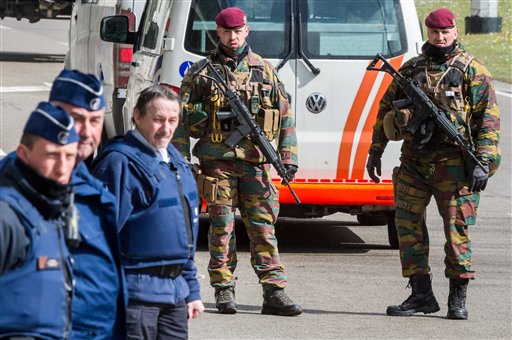By The Editorial Board
Since Sept. 11, 2001, the United States has become more conscious of transcontinental terrorism. Due to our increasing fear about the randomness of terrorist attacks and the high fatality rate, American media is often flooded with images of terrorist attacks throughout the world. In more recent years, this awareness of terrorism and combative responses have been more prevalent as well. However, the actual media coverage of terrorist attacks is in itself disconcerting.
The recent incidents that received the most media coverage were the November 2015 attacks in Paris and the attacks in Belgium last week, which killed at least 30 and injured nearly 300. Massive in scope, these tragedies dominated the media cycle for weeks afterwards.
However, American media failed to bring attention to other terrorist attacks recently. Just five days after the Belgium attack, a suicide bomber struck in Pakistan, killing at least 70 on Easter Sunday in the city of Lahore. A splinter group of the Taliban claimed responsibility. Over 500 people have been killed in terrorist attacks in Pakistan over the last 16 months. Additionally, prior to the Brussels events, terrorists struck Turkey and the Ivory Coast. On March 19, a suicide bomber with supposed ISIS ties killed at least four in central Istanbul. Less than a week earlier on March 13, six gunmen, thought to be members of al-Qaeda, ambushed an Ivory Coast beach resort, killing 16 before being shot to death by security forces.
It is no secret that American media is Eurocentric in its coverage of terrorism. Europe seemed to stop in the wake of the attacks, which ISIS later claimed responsibility for, and the American public empathized with the Belgian people.
On social media, many people have begun to speak out about the lack of coverage for attacks in the Middle East and Africa, while American and European attacks receive the majority of screen time.
Often, in the aftermath of terrorist attacks, hashtags urging us to #PrayFor the area where the attacks occurred dominate social media. When the Paris attacks took place, Facebook created a tool to allow users to superimpose the French flag over their profile pictures in order to show solidarity with the victims of the attack. While these are nice gestures, they lead us to question why hashtags about praying for the Middle East are never trending, and why Facebook does not ask users if they want to add to their profiles the flags of the various Middle Eastern and African countries where terrorist attacks are frequent.
As a news organization, we want to see the same amounts of coverage, and there should to be at least some coverage of international terrorist attacks outside of Europe. The editorial board should not have had to discover additional details on the recent attacks in Pakistan, Turkey and the Ivory Coast, while most of the information about Belgium is now common knowledge. Western countries usually get more sensationalized news stories and media coverage regardless of the how severe the attacks were.
The argument for equal media coverage essentially boils down to the timeless, yet increasingly important, decision between pandering for money and ratings, or performing a service for society. The media likes to pick up western attacks since they do not occur as often in Europe in comparison to the Middle East. People are shocked when this level of violence occurs in first world countries, while another bombing in the Middle East will not truly shock or surprise anyone. If the media actually wants to provide a service to society as informers, they must provide equal coverage of terrorist attacks to ensure that they maintain an unbiased view.
In 2016, we live in a global society. Everyone has a right to be informed when terror is involved and every country’s battle against terrorism is equally important.





































































































































































































